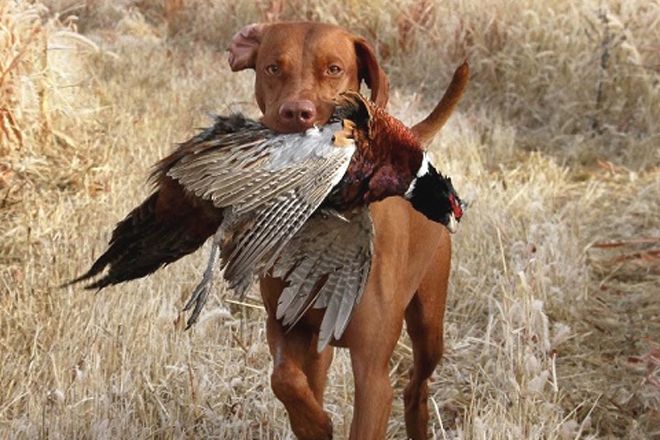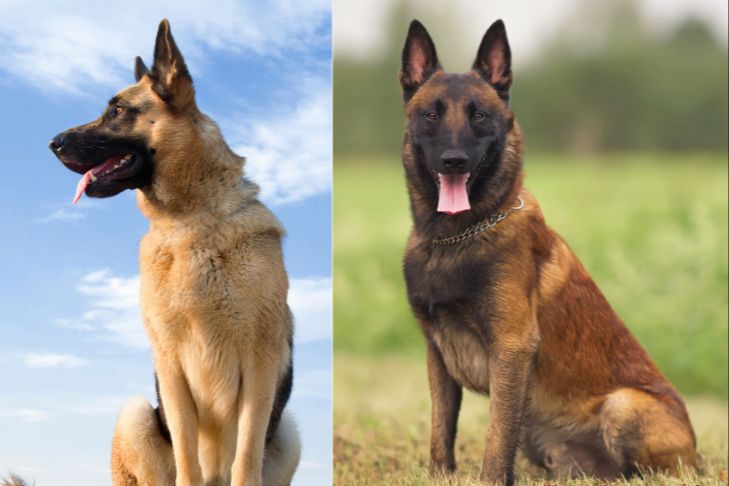Introduction
There are seven major dog groups recognized by the American Kennel Club. These groups were established based on the original purpose or function dogs were bred for. Categorizing dog breeds into groups allows people to better understand the history, traits, and temperaments of different breeds.
The seven major dog groups are Sporting Dogs, Hounds, Working Dogs, Terriers, Toy Dogs, Non-Sporting Dogs, and Herding Dogs. While breeds within a group may have some similarities, each breed is still unique in their appearance and instinctual behaviors.
Understanding the differences between the groups can help potential owners select a dog suited for their lifestyle. It also allows breeders and clubs to organize and promote dog breeds that excel at specific jobs or tasks.
Sporting Dogs
Sporting dogs, also called gun dogs, were originally bred to hunt and retrieve game birds. These high energy, athletic dogs have a strong work drive and require plenty of exercise and stimulation. Some of the most popular sporting breeds include Labrador Retrievers, Golden Retrievers, German Shorthaired Pointers, and Brittanys. Sporting dogs are typically friendly, intelligent, and eager to please, making them excellent family companions in addition to hunting partners. However, their high activity levels mean sporting breeds need lots of daily exercise and mental stimulation to prevent destructive behaviors.

Sporting dog breeds aredivided into three main categories: spaniels, pointers and setters, and retrievers. Spaniels like the American Water Spaniel have soft mouths to gently retrieve downed birds. Pointers and setters like the Brittany use their excellent sense of smell to locate game and then point, crouch or set to indicate its position to the hunter. Retrievers like the Golden Retriever are excellent swimmers built to mark downed birds, retrieve them on land or water, and deliver them undamaged to the hunter.
No matter their specific hunting role, sporting dogs have high energy, athleticism, intelligence, and trainability in common. Their energetic nature makes them best suited to active owners who can provide plenty of daily exercise and outdoor adventures. When their needs for physical activity and mental stimulation are met, sporting dogs thrive as loyal hunting partners and family pets.
Hounds
Hounds are hunting dogs bred to track or chase prey by scent, sight, or speed 1. They can be divided into two main categories: scent hounds and sighthounds.
Scent hounds like Bloodhounds, Basset Hounds, and Beagles have a keen sense of smell and are able to follow scents on the ground or in the air. They were bred specifically for their ability to pick up and follow scents over long distances. Scent hounds often work in packs when hunting.
Sighthounds like Greyhounds, Salukis, and Afghan Hounds rely primarily on their sharp vision and speed to pursue prey. They spot movement from far away and then give chase. Sighthounds were selectively bred for their speed, agility, and sight. They tend to hunt alone rather than in packs. While not as scent-driven as scent hounds, sighthounds do use their sense of smell to some degree when hunting.
Most hounds are independent thinkers and may be more difficult to train than other types of dogs. However, when given an appropriate task that utilizes their natural instincts, they can be quite focused and determined. Overall, the key characteristic that defines hounds is their ability to track prey using their powerful sense of smell, sight, or speed.
Working Dogs

Working dogs are bred for jobs like guarding, rescue, and police work. These intelligent, energetic dogs have a strong work ethic and aptitude for tasks like guarding property, pulling sleds, and sniffing out drugs or bombs. Popular working breeds include the German Shepherd, Doberman Pinscher, Rottweiler, and Siberian Husky. According to Your Dog Advisor, working dogs need consistent training and a job to do, or else they may become frustrated or destructive. They have a lot of energy and do best with active owners who can give them physical and mental stimulation. Many working breeds are loyal, fearless, and protective. With proper socialization and training, they can thrive as working dogs or active family companions.
Terriers
Terriers are a diverse group of dogs originally bred to hunt and kill vermin. They are known for being energetic, feisty, and often aggressive. Some of the most popular terrier breeds include the Jack Russell Terrier, Airedale Terrier, and Staffordshire Bull Terrier.
The word “terrier” comes from the Latin word “terra” meaning earth. This refers to their ability to dig and hunt prey underground. Terriers were bred to have a strong prey drive and the courage to chase rodents and other vermin down into their burrows. Their compact size and tenacious spirit made them well-suited for this task.
In general, terriers are known for being independent, energetic, and vocal. They often have strong guarding instincts and can be feisty with other dogs. Due to their working background, terriers require a lot of physical and mental stimulation. Without proper training and exercise, their prey drive and desire to dig can lead to unwanted behaviors.
While terriers were originally working dogs, today many terrier breeds make lively companion pets. With socialization and training, terriers can thrive in family environments. Their intelligence, spunk, and devotion continue to make them popular choices as household pets.
Toy Dogs
Toy dogs are small companion dogs that were bred down from larger breeds. Some of the most popular toy breeds include the Chihuahua, Yorkshire Terrier, Pug, and Maltese. Toy breeds are known for being affectionate, portable, and adaptable to many living situations. Their small size makes them well-suited to apartment living. These diminutive dogs were bred primarily for companionship and are lively, charming, and playful.

Some toy breeds, like the Chihuahua and Yorkshire Terrier, have big personalities packed into their petite frames. They can be feisty and bark a lot if not properly trained and socialized. Other toy breeds, like the Cavalier King Charles Spaniel and Havanese, have a more gentle temperament. Toy dogs typically weigh less than 12 pounds and stand no taller than 10-15 inches at the shoulder.
While small in stature, toy dogs require lots of interaction and do not do well when left alone for long periods. Their exercise needs can usually be met with short walks or indoor play. Toy breeds are prone to dental problems, hypoglycemia, and fragility injuries from falls or rough play. With proper care and early socialization, toy dogs can make lively, loving companion animals.
Non-Sporting Dogs
The Non-Sporting group is the most diverse group of dogs that don’t fit well into other breed categories. They vary widely in size, coat, personality and overall appearance. The name “Non-Sporting” is a bit misleading, as some of these breeds do have athletic abilities, but they were grouped this way because they do not fit into other categories and were not originally bred for hunting or sport.
Some of the most popular Non-Sporting breeds include the Bulldog, Poodle, Chow Chow, Dalmatian, Boston Terrier, French Bulldog and Bichon Frise. The breed range covers all sizes from small Poodles and French Bulldogs up to large Standard Poodles and Dalmatians. Coat types also vary significantly from the distinctive dense, wooly coat of the Chow Chow to the smooth, short coat of the Boston Terrier.
The wide diversity in this group means prospective owners can likely find a breed well-suited to their lifestyle. Those wanting an active and adventurous dog may enjoy the Dalmatian or Standard Poodle, while city dwellers keen for an apartment-sized companion may opt for a Bichon Frise or French Bulldog. The popularity of many Non-Sporting breeds as family pets speaks to their generally outgoing, affectionate personalities and ease of training.
With such an eclectic mix of physical features and temperaments, the Non-Sporting group offers something for everyone. The key for potential owners is researching individual breeds to find the perfect match for their home and lifestyle.
Herding Dogs
Herding dogs were bred to herd livestock. They are intelligent, energetic, and highly trainable. Some of the most popular herding dog breeds include:14 Best Farm Dog Breeds for Herding and Protection

The Border Collie is considered one of the most intelligent dog breeds and excels at herding. They have seemingly endless energy and stamina, making them excellent workers. However, their energetic nature means they require plenty of exercise and mental stimulation. Without proper outlets, Border Collies can become destructive.
The Australian Shepherd is another agile herding breed that was originally developed to work livestock. They are energetic, smart, and responsive. Australian Shepherds form strong bonds with their owners and do best when given a job to do. Their high intelligence means they thrive when challenged mentally and physically.
The Australian Cattle Dog, or “Heeler,” has great endurance and agility. They are bold, tenacious, and highly driven. While valued working dogs, they need significant exercise and structured training. Without proper leadership and activity, Australian Cattle Dogs may exhibit problem behaviors.
While herding breeds make wonderful working dogs, their intelligence and energy make them challenging pets. They require dedicated owners willing to provide extensive daily exercise, training, and mental stimulation.
Conclusion
The 7 major groups of dogs each have a unique history and purpose. Sporting dogs were bred to assist hunters, using their energetic nature and strong sense of smell to find and retrieve gamebirds. Hounds track prey using their powerful sense of smell and were bred to hunt in packs or work closely with human hunters. Working dogs are intelligent, strong, and hardworking – they were developed to perform various jobs like guarding, drafting, and police work. Terriers are feisty, energetic small dogs originally used to hunt and kill vermin. Toy dogs are diminutive companion dogs bred primarily for their size and friendly nature. Non-sporting dogs are a diverse group without a shared working background, but were mostly bred as companion dogs. Herding dogs work closely with their human shepherds, and their natural intelligence and responsiveness make them highly trainable.
While dogs today mostly serve as beloved pets and companions, their breed history and purpose has shaped their temperaments and traits. Understanding the 7 major breed groups provides insight into a dog’s likely personality, appearance, and behaviors.